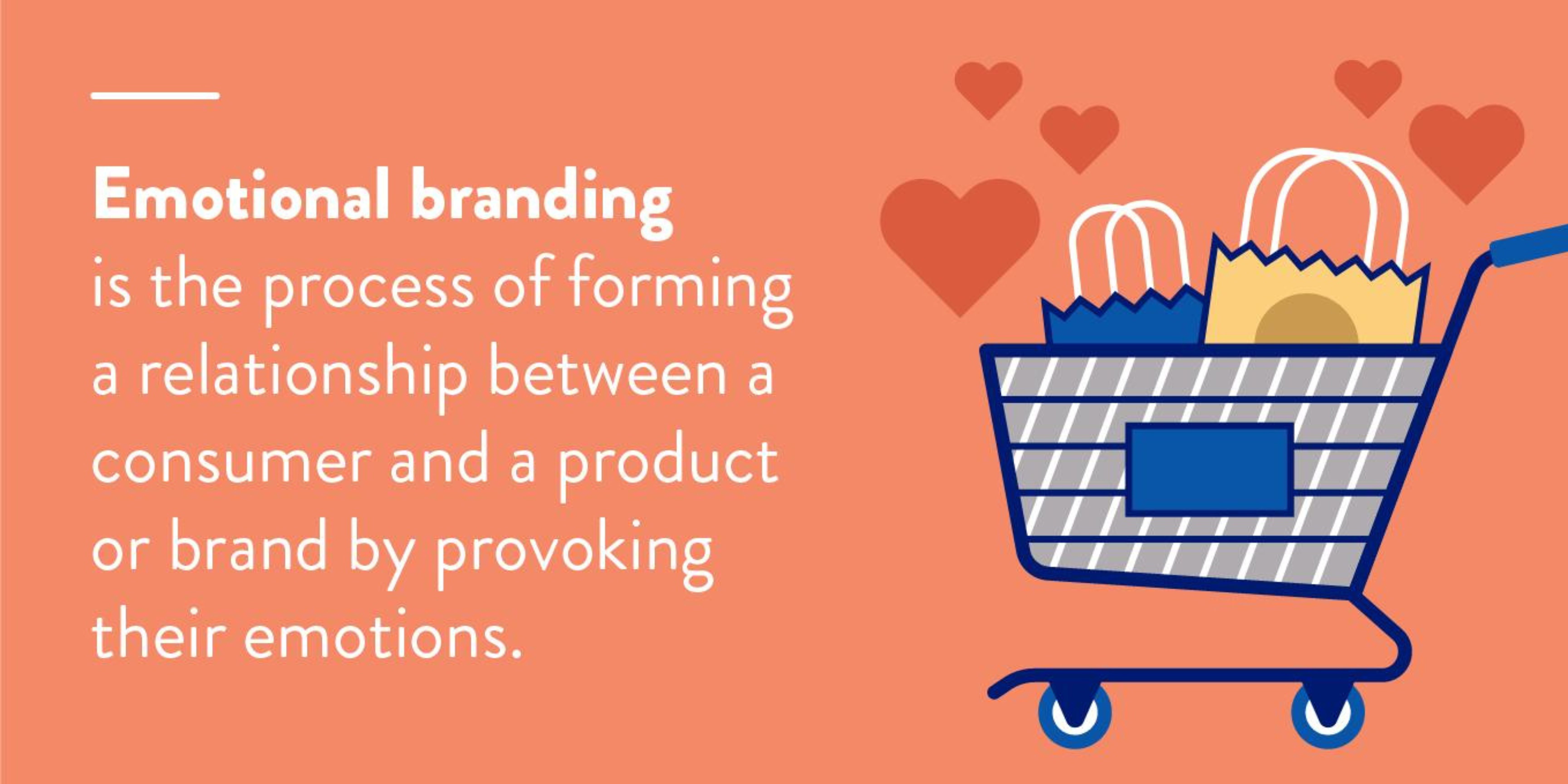When it comes to building a brand’s identity, it’s not just about marketing tricks; it’s about influencing people’s thoughts in a subtle way. Everything from logos to visuals plays a role in creating an emotional connection with customers, fostering strong loyalty. This power isn’t limited to big companies like Apple; even smaller businesses can tap into it to make a lasting impact.
What is Emotional Branding?
Emotional branding is a strategic process, a dance between consumer and brand orchestrated to evoke deep emotional connections. Marketers weave a tapestry of content designed to resonate with the consumer’s emotional state, ego, needs, and aspirations. At its core, emotional branding aims to forge enduring relationships that transcend transactional engagements.
The Origins of Emotional Branding

The concept of emotional branding, articulated over two decades ago by Marc Gobé in his groundbreaking book, “The New Paradigm for Connecting Brands to People,” delves into the profound observation that connections between brands and individuals occur at an emotional level.
Unveiling the Subconscious
Emotional branding taps into primal human desires—love, power, emotional security, and ego gratification. This psychological strategy, when expertly executed, proves to be over 50% more effective than its non-emotional counterparts.
Emotional Branding vs. Emotional Advertising
While seemingly straightforward, emotional advertising is a nuanced practice. Done haphazardly, it risks leaving the audience bewildered. However, when skillfully executed, emotional advertising becomes a potent tool, contributing to the overall emotional branding strategy.
The Building Blocks of Emotional Ads
Each emotional advertisement serves as a vital building block, contributing to the structural integrity of the brand. Noteworthy examples include Airbnb’s “Let’s Keep Traveling Forward” campaign in response to the US travel ban—a bold and effective brand positioning strategy.
Emotion and the Hierarchy of Needs
Drawing inspiration from Maslow’s Hierarchy of Needs, emotional branding navigates the biological and social facets of human motivation. By understanding and aligning with these needs, brands ascend the pyramid, catering to esteem and self-actualization.
Emotional Branding Appeals to Ethos, Pathos, and Logos

Aristotle’s timeless principles—ethos, pathos, and logos—serve as the pillars of persuasive marketing. Achieving a harmonious balance among these pillars results in a brand wielding formidable emotional influence.
1. Ethos: Appeal to Credibility and Ethics
Quoting experts, citing sources, and showcasing testimonials are manifestations of ethos in branding, building trust and credibility within the industry.
2. Pathos: Appeal to Empathy
Motivating consumers through a sense of urgency, fear of missing out, or a sense of belonging, pathos creates a deeper emotional connection when employed with care.
3. Logos: Appeal to Logic and Reason
The most persuasive of Aristotle’s pillars, logos relies on facts and features. However, it gains efficacy when a connection is forged between consumer emotions and logical reasoning.
The Neuroscience of Emotional Branding
Transitioning from art to science, some companies embrace “neuromarketing” to understand and influence consumer brain responses. This scientific perspective, utilizing eye-tracking, facial coding, and EEG, dissects a person’s reaction and gauges emotional responses to branding stimuli.
Powerful Insights from Neuroscience
Statistics reveal the subconscious nature of buying decisions, the visual processing dominance of the brain, and the substantial impact of emotion on brand experiences.
The Benefits of Emotional Branding
Integrating neuroscience with branding and marketing strategies yields compelling results. More effective ads lead to heightened audience engagement, fostering lasting connections and significantly increasing customer lifetime value.
Differentiating Through Emotional Connection
With 90% of buying decisions occurring subconsciously and 89% of consumers lacking a personal connection to brands, emotional branding provides a golden opportunity for businesses to stand out.
Case Study: GEICO’s Emotional Component
Even in the seemingly dry insurance industry, GEICO introduces an emotional component to its branding strategy. The amiable green gecko with a British accent in their advertisements transcends the industry’s stereotype, capturing the public’s affection.
Emotional Branding Best Practices

- Focus on Emotion Through Visuals Visuals, constituting nearly 50% of the brain’s processing power, play a pivotal role in effective neuromarketing. Attention to visual identity, logos, fonts, colors, depth, and movement optimizes positive emotional experiences.
- Personalize Your Interactions Tap into the self-serving nature of the human brain by creating interactions that evoke happiness, satiation, and importance. Customization options and targeted sales and marketing techniques tailored to individual users enhance the personal connection.
- Inspire Engagement Engagement cultivates a personal connection, provoking more profound emotional reactions. Connecting with influencers, sharing user-generated content, and actively responding to reviews and comments foster enduring relationships.
- Make Your Users Comfy Consistency is paramount in emotional branding. Maintaining uniformity in colors and emotional appeal prevents user confusion, contributing to a seamless and comfortable brand experience.
- Respond to Public Relations Issues Quickly Quick responses to major issues exhibit the brand’s responsibility. When Johnson & Johnson faced tampering issues with Tylenol, their swift action, even without evidence of further contamination, exemplified a commitment to consumer safety.
Time to Get Emotional With Your Branding

Appealing to emotion isn’t just a tactic; it’s a proven strategy to attract, connect, and encourage audiences to embrace your products and services. Understanding the profound impact of branding and marketing on individual lives is pivotal for enhancing the user experience.
The Subconscious Business of Life
Decisions, often made subconsciously, unfold below the threshold of awareness. Choosing the right colors, fonts, messages, and overall brand “feel” doesn’t have to be a daunting task. Thoughtful attention to user reactions can transform emotions into loyal, lifelong brand ambassadors for your business. Discover the potential emotional connection CleverTap can unveil through rich user profiles, psychographic, and RFM segmentation.
